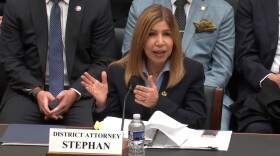Nearly every local government in San Diego County failed in its efforts to create enough housing for the growing population during an eight-year cycle, prompting a grand jury report released Tuesday to offer recommendations as the region faces an even loftier goal during its current cycle.
Some of the recommended strategies include using specific plans to build up areas near transit hubs, working with school and community college districts to identify developable land, working with local religious institutions to the same end and possibly drafting revenue-generating legislation to help assist in the funding of all housing, but particularly "affordable" housing.
"Housing is a human right, and we must make this declaration to ensure we as elected leaders and our whole community own our responsibility to take the actions necessary to ensure every San Diegan has a real opportunity to have the decent and stable housing necessary for a dignified and healthy life," San Diego City Council President Sean Elo Rivera said at a joint meeting between the council and the San Diego County Board of Supervisors on Oct. 3, 2022 when discussing the Regional Housing Needs Allocation.
Since 1969, every eight years, California has required all local governments to plan to meet the housing needs of everyone in the community. This planning process ends with the creation of the RHNA.
During the fifth Housing Element cycle from Jan. 1, 2013 to Dec. 31, 2020, the San Diego region was required by the state to plan for 161,980 housing units. These units were divided among the four state-designated income levels as measured against the Area Median Income, with very low income allocated 36,450 units, low income 27,700 units, moderate income 30,610 units and above moderate income 67,220 units.
Of the 19 governments under the purview of the San Diego Association of Governments, only one — Lemon Grove — met all four standards during the last cycle.
According to the report, Lemon Grove benefited from having the affordable housing Citronica development in the planning process prior to the beginning of the fifth cycle. The city also implemented zoning changes such as raising height limits and increasing density, and amended its Downtown Specific Plan to include more housing.
"Each of these measures helped the city to meet its allocations in the other income categories," the authors wrote. "Lemon Grove also benefited as a developer came in and developed one of the last large vacant tracts of land within the city during the Fifth RHNA cycle."
Of those who met at least one housing goal, Carlsbad, Chula Vista, Coronado, Encinitas, Imperial Beach, La Mesa, San Diego, San Marcos and Vista all only met the "above moderate income" guideline, failing to meet the needs of any residents making less than the area AMI.
Del Mar met both moderate income and above moderate and Poway met low income guidelines.
The authors cited two examples of cities taking proactive steps. El Cajon was praised for using specific plans — building up around the El Cajon Transit Center — and Chula Vista for the Palomar Gateway Plan.
Both of these were built up around mobility hubs. By SANDAG's definition, a mobility hub is a community with high concentration of people, destinations and travel choices.
- Clairemont, College Area poised for growth under new community plans
- Mayor Gloria announces effort to allow townhomes in San Diego's single-family neighborhoods
- San Diego Unified Board to consider nearly 1,500 employee housing units
- AG Bonta warns Del Mar could face penalties over stalled affordable housing proposal
San Diego County is now in the sixth RHNA Cycle — from June 30, 2020 to April 15, 2029 — with an even loftier goal for cities to meet. A total of 171,685 units must be built to meet the rising need during that window, around 10,000 more than were intended for the fifth cycle.
While this is no easy task, the grand jury report did outline other recommendations which could make it possible, including:
- Providing support to re-introducing in the state Legislature SB 1105, or similar legislation, to create a San Diego County agency that could raise revenue for housing.
- Providing support to SB4, which is currently before the state Legislature. That bill is intended to make it easier to provide affordable housing on land owned by religious institutions.
Other city-specific recommendations include the Solana Beach city manager working with the North County Transit District to develop affordable housing at the Coaster station, a recommendation for North County cities to also work with NCTD on developing housing near transit stops and for the county, El Cajon, La Mesa, Lemon Grove, National City and Chula Vista to take on similar work with the Metropolitan Transit System.








